
GE Marine is one of the world’s leading manufacturers of marine propulsion products, systems and services including aeroderivative gas turbines. These highly efficient marine engines meet current and future emission regulations, and offer superior availability for various commercial and military applications. GE gas turbine propulsion systems and solutions are being used in some of the most novel projects such as to power the world’s fastest commercial ship as well as the United States Navy’s new LHD amphibious assault ship.
GE Marine is one of the world’s leading manufacturers of marine propulsion products, systems and services including aeroderivative gas turbines. These highly efficient marine engines meet current and future emission regulations, and offer superior availability for various commercial and military applications. GE gas turbine propulsion systems and solutions are being used in some of the most novel projects such as to power the world’s fastest commercial ship as well as the United States Navy’s new LHD amphibious assault ship.
GE Marine’s gas turbine product portfolio is diverse, ranging in power from 6,000 to 70,275 shaft horsepower (4.5 to 52 megawatts).
Since propulsion architecture is based on the power required, the duty cycle, environmental concerns and many other factors, these are the most popular cycles used for ship propulsion:
What follows is an overview of recent projects, product updates and technology infusion relevant to the commercial and military marine markets.
Francisco achieved 58.21 knots on June 15, 2013 — making it the fastest commercial ship in the world. Built by Australian shipyard Incat for Argentina’s Buquebus,the ship is powered by two lightweight and compact GE LM2500 aeroderivative gas turbines. This displacement catamaran can operate on LNG or Marine Gas Oil (MGO).
Francisco ushers in a new era of eco-sustainability in heavy-duty transportation. Lessons learned through the design and construction phase of this novel ship will assist owners and operators who turn to LNG-powered gas turbines for future high-speed newbuild projects.
The fast ferry can service over 1,000 passengers and 150 cars on each crossing of the River Plate between Argentina and Uruguay. It is the first craft built under the International Maritime Organization’s (IMO) International Code of Safety for High-Speed Craft to be powered by gas turbines using LNG as the primary fuel and marine distillate for standby and ancillary use.
GE took into consideration the fast ferry’s operating and design requirements and incorporated the following features into the LM2500 package design to address Francisco’snarrow catamaran hull:
Pre-wired, pre-piped and factory tested for easy installation, the LM2500 module weighs just 45,500 pounds (20,639 kg), and requires only 27×9 x 10 feet of ship space (8.23×2.74×3.05 m).
Commercial ship owners and operators can experience numerous advantages by applying GE LM gas turbines as prime movers:
NOX emissions from GE gas turbines are inherently low compared to traditional diesels. Francisco’s LM2500s, for instance, are equipped with GE’s single annular combustion system. Adding optional water injection or Dry Low Emissions (DLE) systems would allow the LM2500 to meet Tier III IMO/Tier IV United States Environmental Protection Agency NOx requirements today with no additional exhaust treatment. Additionally, these gas turbines do not suffer from methane slip.
GE gas turbines operate on a variety of fuels, including MGO, biodiesel, bio-synthetic paraffinic kerosene blends and natural gas. Fuel flexibility is even more beneficial today as commercial ship operators adopt dual-fuel operating scenarios to meet new emissions regulations.
Even while operating at full power, 100% of the time, combustor and hot section repair intervals are 25,000 hours or longer when burning natural gas or re-gasified LNG fuel.
GE gas turbines offer easy maintenance and scheduled inspections. When engine overhaul is required, the gas turbine can be changed-out in as little as 24 hours and replaced by a spare unit. This ensures the highest quality service and availability for the ship.
Built incorporating the latest aircraft engine design technologies, quality requirements and corrosion resistant materials, each GE gas turbine provides maximum reliability and parts life along with outstanding performance.
Two LM500 marine gas turbines operate onboard TurboJET’s Foilcat fast ferry. This multihull hydrofoil catamaran, which links Hong Kong to Macau, measures 35 meters long. It can carry 423 passengers, with a maximum service speed of 45 knots.
The world’s largest transatlantic liner, Queen Mary 2, sails today powered by two LM2500+ marine gas turbine-generator sets and four diesel-generator sets. This flagship of the British merchant fleet is owned by Cunard Line.
Power produced by the CODAG propulsion system is also used for shipboard service such as heating, air conditioning and laundry. Each turbine-generator set contributes 25 MW to the ship’s overall 118 MW of installed power.
GE specially designed the two gas turbine packages to be some 35 tons lighter than previous LM2500+ marine installations. This lighter design gave Queen Mary 2 designers greater flexibility in placing various shipboard equipment and public areas. In fact, the gas turbines are located in the top of the ship’s exhaust stack, opening up space for an additional 45 state rooms in the hull below.
GE has delivered more than 90 marine gas turbines worldwide for commercial marine projects, including 17 cruise ships, five high speed yachts and 19 fast ferries. GE engines are the only gas turbines currently installed on cruise ships.
Together GE and Lloyd’s Register are exploring GE gas turbine-powered commercial ship projects globally. This MOU allows GE and Lloyd’s Register to work with some of the leading shipyards to approve in principle GE gas turbine-powered commercial vessels for global customers.
Separately, GE and Dalian Shipbuilding Industry Company were granted Approval in Principle by Lloyd’s Register for a GE combined gas turbine electric and steam system designed by the team for LNG carriers.
GE recently announced that its LM6000 marine gas turbine PC and PG models have received Lloyd’s Register’s Design Appraisal Document to the Marine Naval Vessel Rules (NVR). The LM6000PC marine gas turbine produces 59,900 shp/42 MW and the more powerful PG model has an output of 70,275 shp/52 MW.
With the LM6000 Lloyd’s Register’s Design Appraisal to Marine Naval Vessel Rules obtained, GE offers customers gas turbine-based propulsion solutions for a myriad of additional marine applications including military combatants.
Over 1,110 LM6000 PC models are used for land-based power generation, driving LNG compressors and on marine floating production storage and offloading (FPSO) vessels, offshore platforms and power barges.
For example, two LM6000 dual fuel gas turbines power the TritonFPSO, which produces oil and gas from six fields in the North Sea east of Aberdeen. Including Triton, there are a total of 17 LM6000 gas turbines delivered or operating on the following FPSOs or power barges:
GE’s marine gas turbines offer superior availability for various military applications, ranging from patrol boats, corvettes, frigates, destroyers and cruisers, to supply and amphibious ships and aircraft carriers. What follows are a list of recent naval projects, listed alphabetically by country.
• Australia •
GE will provide in-service support for the Royal Australian Navy’sLM2500 marine gas turbines that power Adelaide- and ANZAC-class frigates. GE will be backed by GE Marine and Air New Zealand Gas Turbines for this multi-year contract.
In addition to repair and overhaul of the RAN’s 16 LM2500s and associated accessories, GE will provide depot level maintenance to be performed by Air New Zealand Gas Turbines, an authorized LM2500 service center and longtime RAN service provider.
GE will provide program management and on-site field service support, and will handle warehouse and inventory management including spare parts and inventory replenishment throughout the life of the contract. The RAN will now have predictable LM2500 gas turbine maintenance costs and lower total cost of ownership — all with the aim of ensuring optimum fleet readiness.
The LM2500 gas turbine will power five new RAN ships:
• Canada •
For more than 20 years, GE Marine has been a proud supplier of the main gas turbine engines of the Royal Canadian Navy’s (RCN) Halifax-class frigates. To date, GE has provided 24 LM2500 gas turbines for 12 frigates.
GE also provides maintenance and logistics support services for the RCN’s fleet of LM2500 gas turbines. This contract includes immediate onsite technical support 24-hours-a-day, 7-days-a-week, as well as:
• Germany •
The German Navy’s Baden-Württemberg (F125-class) frigate, christened in December 2013, is powered by one LM2500 gas turbine, two electric motors and four diesel generator-sets in a CODLAG propulsion arrangement. The christening ceremony was held at ThyssenKrupp Marine Systems in Hamburg, Germany. GE will provide LM2500 gas turbines for the four new CODLAG-configured F125 frigates that will replace the German Navy’s eight Bremen-class F122 frigates. GE LM2500s also power the German Navy’s Bremen, Brandenburg- (F123) and Sachsen-class (F124) frigates.
• Italy •
One LM2500+G4 marine gas turbine supplied by Avio Aero will power the Italian Navy’s eighth FREMM frigate.Through Avio Aero, at least 17 LM2500+G4 gas turbines are expected to provide propulsion for the Italian-French-Moroccan FREMM program, which includes eight ships each for the Italian and French navies and one ship for the Royal Moroccan Navy. Avio Aero assembles the gas turbines into propulsion modules and services the engines for the FREMM program — all at its Brindisi facility. Avio Aero also services the LM2500 modules that power Italy’s Cavour aircraft carrier. In total, GE LM2500 gas turbines power seven Italian Navy ship classes.
GE is a longstanding partner in Italy, employing more than 12,000 individuals. In Brindisi, Avio Aero produces 20% of the worldwide LM2500 engine components. The facility also serves as GE’s Center of Excellence for the overhaul and repair of GE’s LM2500 engine family, and will soon offer global marine and industrial customers overhaul capabilities for GE’s LM6000 gas turbine.
• Japan •
Two LM2500 gas turbines provided by IHI will power the Japanese Maritime Self-Defense Force’s (JMSDF) new 26DD destroyer. The GE LM2500s will be equipped with integrated electronic controls, and will be arranged in a COmbined Gas turbine-eLectric And Gas turbine (COGLAG) configuration. IHI will deliver the LM2500 propulsion modules to MHI’s Nagasaki Shipyard & Machinery Works in 2017. Separately, during a March 25, 2015, the JMSDF commissioned JS Izumo (DDH-183) in Yokohama. This is the first of two helicopter carriers for the JMSDF, and itincludes LM2500 gas turbines for propulsion and LM500 electrical generator-sets for onboard ship service electrical power. This ship marks the first LM500 generator set application for military ships. The LM2500 and LM500 modules were built by IHI. The current global LM2500 fleet totals more than 2,500 engines operating in diverse marine and industrial applications. Including the 26DD program, the JMSDF uses LM2500 and LM500 gas turbines for its Kongou-, Murasame-, Atago-, Hyuga- and Izumo-class ships. To date, IHI has packaged, tested and delivered over 70 LM2500 and more than 30 LM500 marine gas turbines.
• Republic of Korea •
GE’s LM500 gas turbines will soon power the Republic of Korea Navy’s PKX-B patrol boat program. The PKX-B program is planned for 34 ships and each ship uses two LM500s. The existing 18 ships in the PKX-A program also are powered by two LM500s per ship in a CODAG arrangement. Continuing PKX-A program capabilities into the PKX-B program, Samsung Techwin locally manufactures selected parts of the LM500s, and assembles and tests the completed engines. GE will provide support of the gas turbine, control, and reduction gear system to Samsung Techwin, shipyard Hanjin Heavy Industries and Construction, and the ROK Navy throughout installation, sea trials, and commissioning.
• Turkey •
GE will provide Savunma Teknolojileri Mühendislik Ve Ticaret A.Ş. (STM), Ankara, Turkey, with LM2500 gas turbines to power the Turkish Navy’s third and fourth MILGEM multi-purpose corvettes.
STM is the program manager for these two new ships, and will provide platform systems, construction materials, design services and the main propulsion systems, as well as integration of the propulsion system. In addition to the services provided to the Turkish Navy, STM has export responsibility of the MILGEM corvettes with the endorsement of the country’s Undersecretariat for Defence Industries (Savunma Sanayii Müsteşarlığıor SSM). In accordance with export targets, STM is expected to have further collaboration opportunities with GE Marine. The propulsion system for the new MILGEM ships will be the same as sisters TCGHeybeliada (F-511) and TCG Büyükada (F-512), consisting of an LM2500 gas turbine-basedCODAG system with two diesel engines. Total propulsion power is 31,000 kilowatts, allowing the ship to reach maximum speed in excess of 29 knots. The corvettes have an overall length of 99 meters with a displacement of 2,300 tons.
The initial two MILGEM corvettes entered naval service in September 2011 and September 2013, respectively. Additionally 24 LM2500s operate aboard the Turkish Navy’s Barbaros- and Gabya-class frigates.
The LM2500s for the MILGEM program are manufactured at GE’s Evendale facility. Tusas Engine Industries Inc. (TEI), a joint venture between GE and Turkish Aerospace Industries Inc., manufactures parts for LM2500 gas turbines as well as other GE Aviation engines at their facility in Eskisehir, Turkey.
The MILGEM program is managed by SSM, and similar to the first two ships, the Turkish Navy will undertake design and performance responsibilities for the new corvettes. The new MILGEM ships will be constructed at the Istanbul Naval Shipyard; GE will deliver the engines in 2015 and 2016.
• United States •
The United States Coast Guard’s eighth National Security Cutter Midgett (WMSL 757), will be powered by an LM2500-based CODAG propulsion system.All eight ships in the U.S. Coast Guard’s Legend-classcutter program feature the same LM2500-based CODAG propulsion arrangement. Similar to its sister NSCs, Huntington Ingalls Industries’ Ingalls Shipbuilding division will construct the 418-foot-long Midgett at its Pascagoula, Mississippi, shipyard.
Four NSCs Bertholf, Waesche, Stratton and Hamilton, are fully operational and executing Coast Guard missions in the field. The fifth James, is scheduled for delivery and commissioning in 2015. The sixth cutter, Munro is expected to be delivered in 2016. Fabrication of the seventh NSC, Kimball, began earlier this year and delivery is scheduled for 2018.
Increasing fuel costs and stricter emissions requirements in the marine industry are compelling owners and operators to reevaluate the impacts and economics of ship power plants. These trends set the stage for expanded use of energy efficient technologies on commercial and military vessels. One promising solution is Exhaust Heat Recovery (EHR) using carbon dioxide (CO2) as the working fluid.This technology offers the desired benefits of increased fuel efficiency coupled with marine-friendly features such as compactness and low maintenance requirements.
Using similar thermodynamic cycle principles that have been in practice for over 100 years, but replacing traditionally used steam with CO2, these systems improve upon the many benefits of a proven technology. Together, Echogen Power Systems and GE Marine are bringing CO2-based exhaust heat recovery to commercial marine and naval applications for integration with diesels and gas turbines.
GE is the exclusive provider of Echogen Power Systems’ exhaust heat-to-power products that enhance GE’s mechanical, hybrid and all-electric propulsion system solutions, boosting system efficiency to nearly 50%.
Benefits of CO2 Power Cycle
Heat recovery has traditionally been performed using a steam system. Three primary drawbacks with steam systems are the large footprint, high maintenance requirements, and the difficulties operating and managing water chemistry. The system size results in only large prime movers being economical heat sources. Additionally, the number of components necessary, especially in the dual-pressure steam system configuration, is daunting enough to keep steam from being widely adopted on medium and small prime movers.
A heat recovery system using CO2 as the working fluid captures inherent benefits of an exhaust energy bottoming cycle while addressing the shortcomings of the more prevalent steam option. Some of the benefits that CO2-based Rankine Cycle technology offers versus steam include:
• Simple operation:
The CO2 system is a fully automated, closed-loop cycle with no prime mover operating restrictions. Operation can be integrated with the ship power management system.
• Non-corrosive working fluid:
CO2 can remain in the system, including the exhaust heat exchanger, without risk of rust or corrosion.
• Scalable and adaptable:
The CO2 system is scalable from 200 kilowatts to more than 50 megawatts, and can be used on a wide range of heat sources from 240°C/464°F (e.g., low-speed diesel) to 600°C/1112°F (i.e., gas turbine).
• Competitive efficiencies:
Similar thermal-to-electric power conversion efficiency as steam or ORC systems.
• Compact turbomachinery:
The thermodynamic properties of sCO2 allow for significant reductions in turbomachinery weight and volume over steam systems (see Figure 8). CO2 systems typically use a single-stage turbine.
• Closed-loop architecture:
The CO2 system does not require make-up water or strict water chemistry requirements. This simplifies operation and eliminates the need for licensed marine steam operators.
• Lower maintenance costs:
Theuse of CO2 eliminates the need for steam system equipment such as the condensate system, water treatment and chemistry, and steam system specific maintenance efforts. The closed-loop, sealed design simplifies operation and maintenance of the bottoming cycle.
Because CO2 can also be used as a refrigerant, recovered energy can be easily transferred between generating electricity and cooling systems such as chilled-water production, air conditioning, electrical equipment cooling, and gas turbine inlet air cooling for hot-day power augmentation.
Echogen Update
In December 2014, Echogen Power Systems announced the commercial availability of its EPS100 heat engine system as a turnkey solution that satisfies energy demand, environmental requirements and bottom line cost savings for industrial, power generation, oil & gas, and marine customers. The compact, packaged power system, with up to 50 megawatt (MW) capabilities, reduces the overall cost of ownership with lower transportation and installation costs. The cycle also can operate water-free — a key advantage in many parts of the world.
As witnessed with the service agreements in place with military customers such as Canada’s and Australia’s Navy and fast ferry operator Buquebus, GE Marine is more than an equipment supplier. GE can provide customized agreements to match the needs of customers in providing care and maintenance of their propulsion systems.
By shipping hundreds of new gas turbines each year into long-term marine and industrial projects, GE Marine assures speedy parts and services now, and ongoing support well into the future.
Visit www.ge.com/marine for additional information or contact:
Military Gas Turbines
Dave Nelson, Military Marketing Manager
e. dave_nelson@ge.com; t. 513.552.4230
Commercial Gas Turbines
Jeremy Barnes, Commercial Marine Marketing Director
e. jeremy.barnes@ge.com; t. 513.552.9561
The National Oceanic and Atmospheric Administration (NOAA) estimates that more than 700 million gallons of petroleum enter the environment each year, more than half of which is due to irresponsible discharges and illegal disposal. Oil leakage from stern tubes, once considered a part of normal operational consumption of oil by ocean-going vessels, has become an issue of concern and is now considered oil pollution.
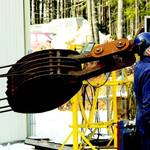
Hawboldt Industries was founded in 1906 in Chester, a small town in rural Nova Scotia, Canada. After more than 100 years, the company still resides in the same town but its business and product focus has changed dramatically. From its humble beginnings primarily servicing the local Nova Scotia marine and fishing market, Hawboldt products now reach a global customer base and serve a dynamic group of market segments.
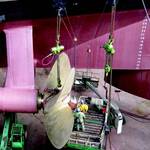
According to Bureau of Labor Statistics, a total of 717 work injuries occurred as a result of contact with objects and equipment in 2013. Roughly, 245 of them were struck by falling objects and another 105 workers were fatally injured after being caught in running equipment or machinery. Needless to say, anything can happen on a jobsite. Your equipment could malfunction or the weather might cause a whirlwind of unexpected issues, or even worse, someone could get hurt. Unfortunately, not much can be done when circumstances such as those arise, which is why developing preventive strategies is crucial to having a successful and safe project. One of those strategies is always choosing safe and reliable lifting equipment. But the question that remains is: is it safer to rent or to buy?
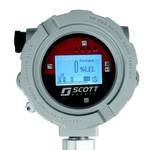
Protecting your people and your physical structure, while ensuring business continuity, are the most important functions of a fixed gas detection solution. Engineering a reliable, high-performance system that makes it easier and more cost effective to meet this challenge is the driving force behind a truly universal approach to gas detection.
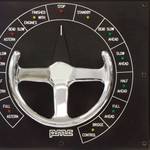
Prime Mover Controls (PMC), based in Burnaby, B.C., Canada, began in 1969 as a small governor service shop, servicing virtually all types of Woodward governors. Over the years, PMC has kept up with new developments in governor technology and has maintained a dedicated and experienced staff of service technicians, as well as extensive test equipment. Servicing and adapting new Woodward governors to a wide variety of applications, both on and offshore, continues to be a significant part of PMC’s business.
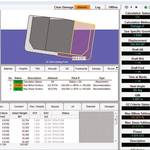
(Herbert-ABS), sets the standard for leading edge stability, load management and emergency response software solutions for the marine and offshore industries. A joint venture between Herbert Engineering Corporation and American Bureau of Shipping, Herbert-ABS supplies quality marine and offshore software products that include LMP-Offshore (offshore load management), CargoMaxTM (shipboard trim, stability and loading) and HECSALVTM (salvage engineering and design). Herbert-ABS is headquartered in San Francisco, with site offices in Glasgow, Singapore, Busan and Shanghai. Herbert-ABS recognizes that success comes from putting their customers first in terms of on-time deliveries, technical excellence and after sales support. The company offers user-friendly software, which is continuously enhanced to meet the needs of the industry.